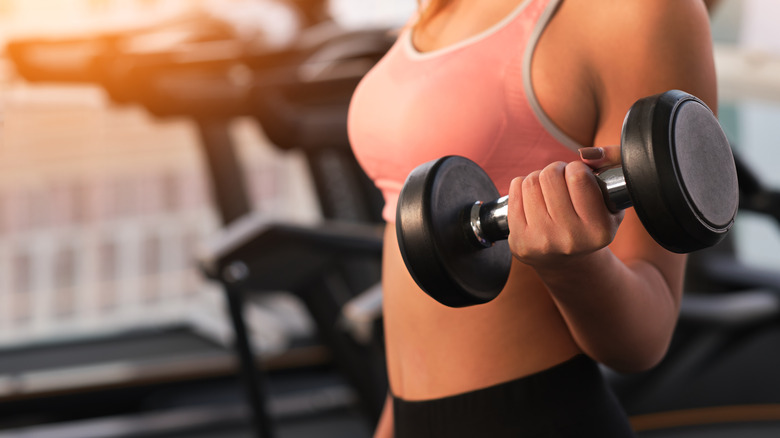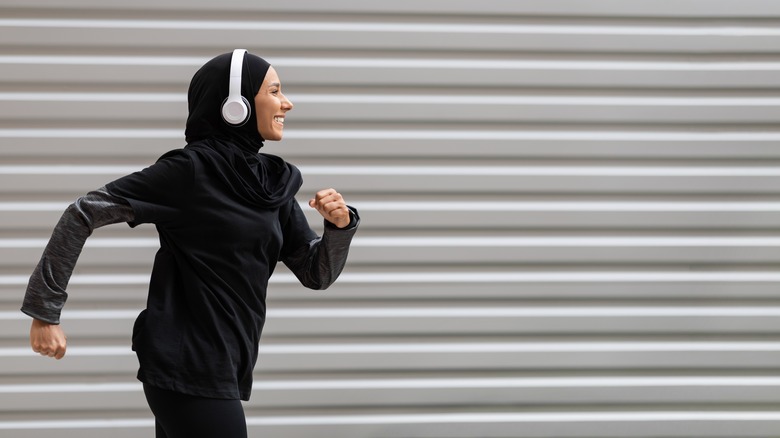Can You Biohack Your Period To Make Your Workouts Better?
Biohacking your period refers to tracking it and adjusting your workouts and diet depending on the stage of your cycle (via Well and Good). For many people, this process can help you learn more about how your body works and what it needs in order to function optimally. For example, you might find that you have more energy during certain times of the month or that certain foods make you feel better than others. By understanding these things about your body, you can design a workout and diet plan that is tailored specifically for you and your needs, which can help you get the most out of your workouts and see better results.
During the follicular phase of your period, which occurs after your cycle ends, estrogen levels are rising. This can give you more energy and make you feel more motivated to work out. You might find that you have more endurance during this time and can push yourself harder than usual. As a result, this is a great time to challenge yourself with tougher workouts or longer runs. During the ovulation phase, which is the middle part of your period, estrogen levels are at their highest. While you may feel more energized during this time, you are also at a higher risk of injury because your ligament laxity increases.
Working out during your period
During the luteal phase of your period, which is when your period starts, progesterone levels rise. This can make you feel more tired and sluggish, and you might not have as much energy for working out (via Well and Good). However, this doesn't mean that you should skip your workouts altogether. In fact, moderate exercise can actually help relieve some of the symptoms of PMS, like cramps and bloating (via Healthline). If you're feeling up for it, a light workout during your period can actually be beneficial. Just make sure to listen to your body and take things easy. And if you're really not feeling it, that's totally okay too.
If you're interested in biohacking your period, there are a few things you can do to get started. First, track your cycle using a period tracker app or website. This will help you keep track of when you ovulate and when your period is due. Then, start paying attention to how your body feels during different times of the month. Note down any changes in energy levels, mood, or cravings. This information can be helpful in designing your workout and diet plan. Finally, consult with a doctor or nutritionist to make sure that you are getting all the nutrients you need. They can help you create a plan that is safe and effective for you.


